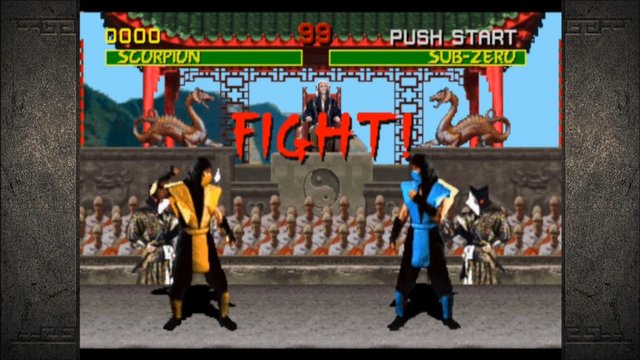How Many FRAMES PER SECOND Can You Actually See? - Tech Shorts - Part 8.
When it comes to frame rates, there is a huge debate between Console and PC gamers over how much FPS you can actually see.

Image Source/Credit - @TechMojo Merch Store
What Is Frames Per Second?
- FPS, or Frames Per Second is at its core, a series of consecutive still images, referred to as frames that appear on a screen/display within a second.
Historically, some of the very first films from the late 1800's to very early 1900's typically ran between 15 to 24 frames per second depending on how fast the old mechanical cameras were cranked. Soon after sound films came around in the late 1920's, the industry settled on 24 FPS and for a very long time, both films and TV all used 24 frames per second. Some still do today, but is vary rare.
You may notice if you have ever bought a new TV, that they tend to advertise its Frame Frequency which is measured in Hertz. Hertz are measured identically to frame rate, so if your TV is advertised as 60hz, it will be able to show you up to 60 frames per second. If a monitor is advertised as 244hz, then that is equal to 244 FPS.
With the advent of the digital age, and a huge boost in video quality, frame rates in TV, Film and Games have all substantially increased to 60 FPS or more on average.
FPS in Games.
- Unlike the film and TV industry, frame rates in games have not been overly standardized. The Magnavox Odyssey that was released in 1972 was able to produce up to 50 frames per second, however almost every game that was released on this system was lucky to get half that amount, with many falling short of 20 FPS.
One of the more note worthy games that purposely decreased its frame rate in order to maximize system resources was the 1992 title, Mortal Kombat. The game used some of the first live action motion capture technology to produce life like animations for the game. But due to the low performance of the hardware available, instead of just lowering the resolution as many other game developers did when they ran into performance problems, they instead reduced the amount of frames that were rendered each second. This was done to not only keep the resolution as high as possible so the motion capture animations look as good as possible but to enable the game to run on the hardware that was available at the time, most notably, the Super NES and the Sega Genesis.
This reducing of frame rates can be seen throughout the gaming industry since the early 70's. Even with some of today's titles, although the console side of the industry in more recent years is semi standardised at around 30 FPS, there is no real standard as games still vary wildly from 24 to 60 FPS. With the PC side of gaming, there is no standard to speak off, ever. The frame rate on a PC is totally dependant on the hardware and graphical settings you use. The frame rate for a pc can range from the barely playable 20 FPS all the way up to and beyond 250 fps. And that is where the argument begins between console and PC gamers.
How Many FPS Can You See?
- Many people, mainly console gamers and even some PC gamers have this belief that the human eye can only see so many frames per second. Some say its about 16 FPS, some 24 FPS and others think about 50 FPS. It is used as one of the main arguments as to why PC gamers are wasting there money buying the hardware so there game will produce 200+ frames per second. And they are wrong.... well... half right.
The human eye is not digital, it doesn't capture images like a camera, a series of images. Instead it is a permanent fixture that is constantly seeing, not capturing, but continually seeing and processing what it is we see. If we look left or right very fast, there is a moment where it will blur but this is simply your brain catching up and processing the new information. This is why in many PC games today, you have motion blur as a graphical option, to mimic what the human eye does. Another example of the ''blur'' you see is when you write your name with a sparkular at night. Your moving the sparkular faster than your brain can process the information, thus it ends up as a blur. This is still not to be mistaken for a frame rate, remember, a camera is digital, you are biological and the 2 systems work very differently. Maybe if I was Data from Star Trek, C3P0 from Star Wars or Bender from Futurama, then maybe I would see in frame rates.
What we see can also be called perception. Our perception can vary a lot and everyone on the planet has a different rate of perception. A higher frame rate can be perceived to be smoother than a lower one. This is one of the main reasons why both Microsoft and Sony have produced consoles that are fully capable of 60 fps over there 30 fps predecessors. We perceive the higher frame rate as a smoother image because our eyes are seeing more information in the same period of time.
There have been many studies on the subject, and this study by Kai-Lin Chuang from Drexel Univercity is one of the better ones to read. In it, the majority of people tested could perceive a difference between a 60fps animated movie sequence and a 120fps one of the same sequence.
FPS In The Future.
- Well as hardware improves and gamers become more demanding for the developers to create a better experience, one of the ways in which they do this is to increase frame rates of the games. As such, the hardware needed to drive the higher frame rates will improve as time moves on. Consoles only ever get an update every 3 – 6 years depending on the manufacturer, and despite most serious PC gamers having the hardware to play games at upwards of 200fps, console gamers are still sat at 30 – 60 FPS depending on which game they are playing. The next generation of consoles that may be releasing within the next couple of years are rumoured to be able to produce native 4k at a minimum of 60fps. This is to create a much deeper and immersive experience for the gamers.
One of the biggest differences between PC and consoles is that a console as a whole is a relatively cheep all in one package that allows the end user to enjoy games out of the box. PC's on the other hand, gaming ones specifically can be much more expensive, and because they have the higher grade hardware, they are able to explore the higher frame rates that come with it.
- As a life long gamer, I know the importance that frame rates can have when immersing myself into a game. Regardless, myself and many other gamers out there, at this point in time, we generally aim for 60fps or above for the semi optimal frame rate that will give you a good gaming experience you can enjoy. Anything above this 60fps threshold will undoubtedly improve the look and feel of the game, but me personally, I just see it as a bonus. This is more because my gaming PC is a mid tier PC and with most of my games running at maximum/ultra settings I often find myself averaging between 60 to 100fps. Obviously more is better, but the look of the game is more important to me.
Myself, and I am sure many of you have seen the petty arguments between console and PC gamers over frame rates and the human eye can only see X amount so the rest is a waste. It is now a very old argument that needs putting to bed. We are not machines, we don' see life as a series of frames, we just have a perception of it. Some of us can tell the difference between 2 frame rates, others can't. But if our eye sights were limited to seeing only a handful of frames per second, then why does the film, TV and gaming industry produce work that exceeds that number by a huge margin? 60, 240, some films are recorded and played in cinemas at above 120fps, and this is to give us the best immersive perception possible.
What do you think about this old argument between console and PC gamers?
Let us know in the comments below.
Thanks for reading.
Stu @TechMojo
Join the chat TechMojo Discord Channel Follow us TechMojo Dlive Channel Like us TechMojo Facebook Page Follow us TechMojo Twitter Follow us TechMojo OnG Social Page
@TechMojo Recommended Blogs you should follow.
@Deeviras @Gaming-Stuff @retro-room @gamesociety @Rerez @C0ff33a @Free999Enigma @NegativeSpace @SteemGC @GamingStation @XR-HammerGaming @Enjar If you want to apper here, then contact us via our Discord Channel!








Hey, STEEMPUNK-NET here
We support players and games on STEEMIT. We like your Post!
We left you a few votes. We hope that's okay ;-)
The first MMORPG on STEEMIT
STEEMPUNK-NET is the first massively multiplayer online role-playing game on STEEMIT. We hope to meet you on our server!
Do you want profit and still be helpful?
Delegate some SteemPower to @steempunknet : [50] [100] [200] [500] [1000]
We can't really see that many frames...but I think the real problem is that we can tell when something's digitally created that it's a bit jerky. We need extra technologies the make the framerate smoother. We don't really need something to be 120 fps, but we do need the game to focus on the key elements, and draw a few more frames there, and use effects to bring the frames together. But, without there being someone that can tell us that a certain game looks better, even at a lower framerate, we have to just pump up the framerate.
But, if you're one of those crazy people that wants a super high framerate, a computer that costs more than your car is the way to go.